Most people in Britain think of Le Havre as a place to get off the ferry and drive straight on to their holiday in France. For the French it’s a sailor’s haven, a seaside resort for families and gateway to the Alabaster Coast. The translucent quality of the light meant this stretch of coast was beloved by the Impressionist painters.
On my weekend in Le Havre I discovered there’s a lot more to this UNESCO World Heritage site than meets the eye Here’s a roundup of all the best things to do in Le Havre, France. With daily ferries on the Portsmouth Le Havre crossing with Brittany Ferries, it’s an ideal weekend break destination.
This article may contain affiliate links that provide commission on purchases you make at no extra cost to you. As an Amazon Associate I earn from qualifying purchases.
Getting to Le Havre by ferry
We arrived in Le Havre port on an overnight sailing with Brittany Ferries, having slept well in our cabin bunks. After a good breakfast it was up on deck just as dawn was breaking.
With flat-fronted post-war buildings lining the port, you won’t find much of the picturesque as the ferry sails in. Most of the town was destroyed by Allied bombing in the Second World War.
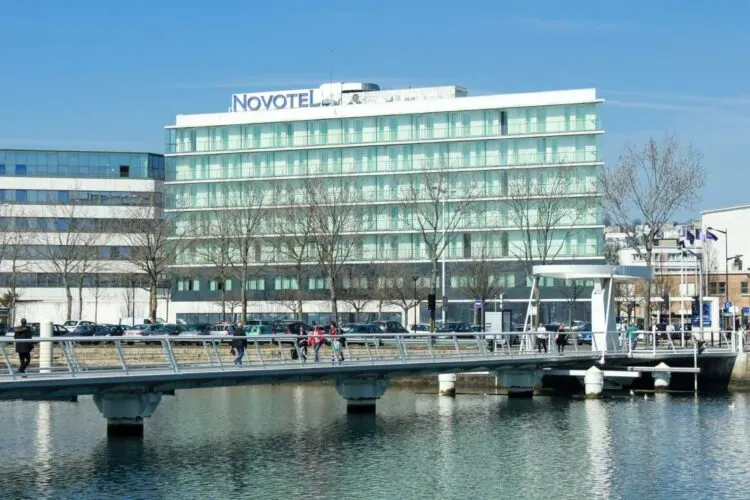
Novotel Le Havre Centre Gare – comfortable, modern and well located within walking distance of the ferry port
The post-war architecture of Le Havre
The man awarded with the monumental task of rebuilding Le Havre and rehousing the 80,000 people who had been made homeless, was architect Auguste Perret.
Rather than try to reconstruct the town in the old style, the acres of rubble were replaced with a unified town plan. Inhabitants were rehoused in new apartments, allocated based on the size of the houses they had lost.
The approach was not universally popular since the people of Le Havre just wanted their old town back. However, the scale of the devastation made this impossible.
You may also enjoy: A guide to Monet’s Garden at Giverny – Normandy, France
1. Visit the Hotel de Ville – for views of Le Havre
Since there was no source of stone nearby, little petrol to transport materials and a minimal post-war budget, the options were limited. Perret’s solution earned him the name The Poet of Concrete.
This flexible material could be easily transported and mixed on site, to create low rise apartment blocks. These blocks were harmonious, yet each subtly different in their colours, textures, classical columns and balcony design.
From the top of the Hôtel de Ville Le Havre, we were able to look out over the town. We could see how it had been rebuilt with ordered boulevards and everywhere rectangular apartment blocks.
Perret’s modernist vision has now been awarded UNESCO World Heritage Site status, as an example of post-war town planning and the innovative use of concrete.
If you go: Enquire in the Hôtel de Ville (town hall) or Maison du Patrimoine (the Le Havre tourist information centre) at 181, rue de Paris. Check whether there are guided tours up the tower of the Hôtel de Ville, which are recommended for the 360 degree views over the town.
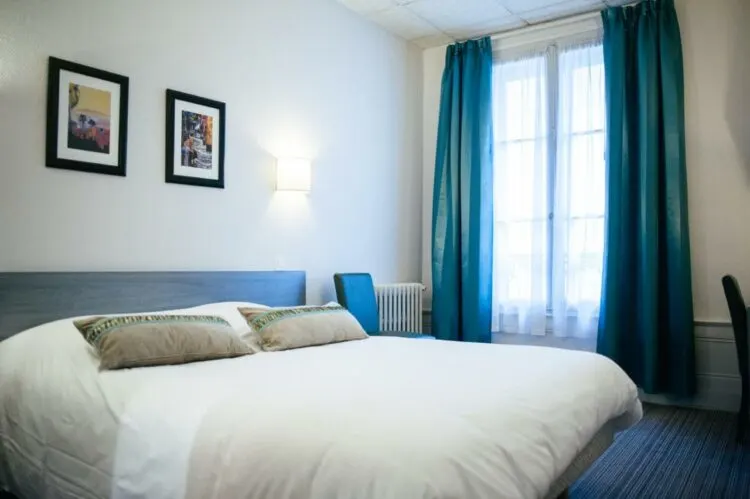
Hôtel Carmin is located in Le Havre town center, with colourful, modern rooms
2. The Church of St Joseph in Le Havre
As you come into Le Havre by ferry, the spire of St Joseph’s Church rises 350 feet above the town. It serves as a lighthouse for sailors to navigate into safe harbour.
The church is one of main tourist attractions in Le Havre. This landmark building that Auguste Perret designed after the war was built on the site of earlier churches that had been destroyed.
Like the rest of Perret’s designs, St Joseph’s is a monument in concrete. The exterior has an industrial feel, like a giant warehouse and the solid, square base does not give much away of what is inside.
Unusually the church is built on the square Greek cross, with the spire rising like a chimney above the central altar. Perret left the concrete structure unadorned, just as it came out of the moulds.
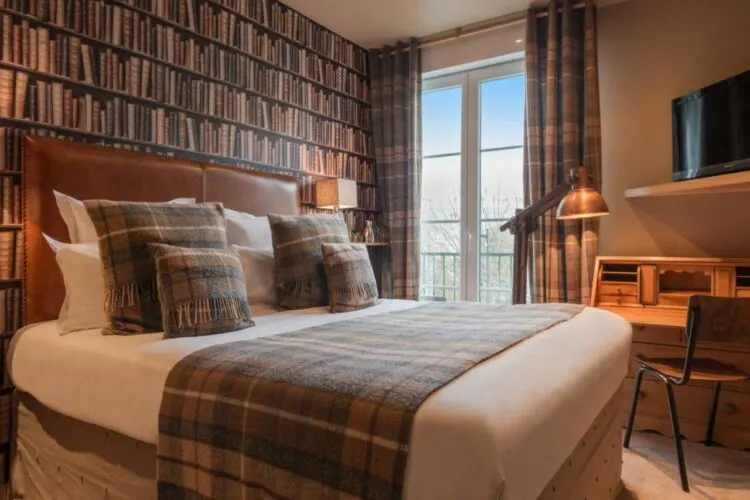
Hôtel Spa Vent d’Ouest has a cosy atmosphere and nautical theme, and overlooks St Joseph’s church
Stained glass at the Church of St Joseph
Once inside the church’s interior is softened by the glow of the stained glass in geometric patterns. Perret commissioned the design of the stained glass from another artist, Marguerite Huré.
6500 pieces of stained glass rise in grades of colour getting paler until they end with white at the top of the spire. The impression is a harmonious whole but there are subtle variations of colour which change with the direction of the sun.
To the east the lilac, green and gold represent the nativity, to the north the blue represents the Virgin Mary. To the south the orange and gold represent the victory of Christ triumphant.
Other than the stained glass there is little decoration, only the two statues of the Virgin and Saint Joseph that were brought from an earlier church. St Joseph’s church is austerely beautiful and unique.
The stained glass colours reminded me, as I looked up the spire towards the sky, of a child’s kaleidoscope with dots of colour forming ever changing patterns. I remember my grandfather made a kaleidoscope for my mother during the war with balls of coloured foil sweet wrappers. Perhaps Marguerite Huré had one too?
The church was completed after Perret’s death in 1957 and is dedicated to the victims of the bombings in Le Havre.
If you go: St Joseph’s church, Bd François 1er, 76600 Le Havre. Free entry. Open daily 9:00-5:30pm except during services.
3. The Auguste Perret Show Flat in le Havre
To get a feel for the accommodation that was built to rehouse families after so much of the town had been destroyed in the war, visit Appartement Témoin Perret. This ‘Show Flat’ is an example of one of the apartments that has been furnished as it would have been in the 1950s.
The goal was to maximise the limited space, at a time when the priority was to rehouse the largest number of people. Perret created an open plan layout with a living area off which all the other rooms flow.
It was revolutionary that the bathroom was not outside in the yard. The kitchen was now in the heart of the home, boasting labour saving appliances such as a refrigerator, pressure cooker and vacuum cleaner.
Classic Scandinavian design
If I was a modern woman of the 1950s, having lived through the war and the town laid to rubble, I think one of these flats might have looked like heaven to me! I’d be happy to move in myself, with the wooden floors, colourful rugs and warm oak furniture.
The apartment was reminiscent of the classic Scandinavian designs of the same era. I loved the way that even the wardrobes were filled with clothing from the period. Shelves were stacked with crockery, as if the family had just popped out to do some shopping.
If you go: Auguste Perret Show Flat, Maison du patrimoine, 181 rue de Paris. Entry: €7, free for under 26 yrs and on 1st Saturday of every month. Open Mon-Fri for tours at 3:30pm and 4:30pm and additional times in July/August.
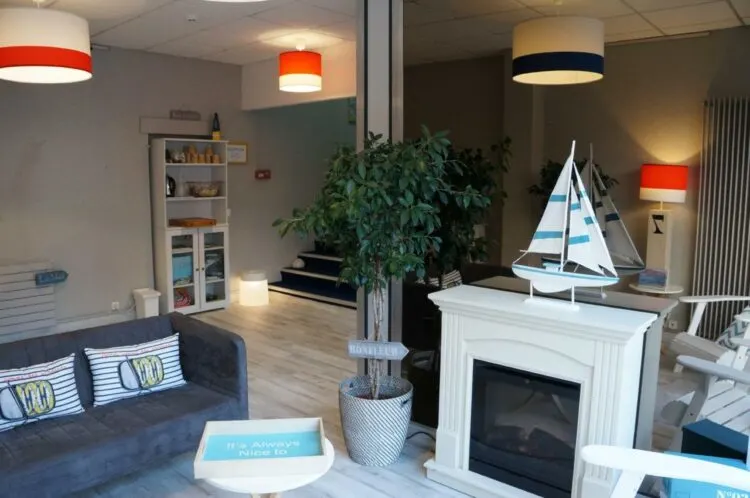
Hotel Le Petit Vatel is centrally located with a nautical theme and close to Le Volcan
4. Le Volcan in Le Havre
What Le Havre lost in its picturesque pre-war town, it has more than made up for in stunning modern architecture. Le Volcan is the Volcano shaped cultural centre by Brazilian architect, Oscar Niemeyer. We walked down the steps from the road to an open piazza below the level of the main town and through the library which was packed with families, teenagers and locals of all ages.
It’s not really a place you would think to go as a tourist. Walking through into the space below one of the two ‘volcanos’ we could see what an effective and clearly much loved venue this is.
Orange and yellow chairs are grouped around casually, with book-cases for browsing. There are rooms to watch a DVD or listen to music, spaces to just hang out with your friends or people-watch from the upper level balconies. I think there are probably a few quiet corners if you just want a snooze too!
If you go: Le Volcan, 1 quai George V. Free entry for the library, also musical and artistic events are held here.
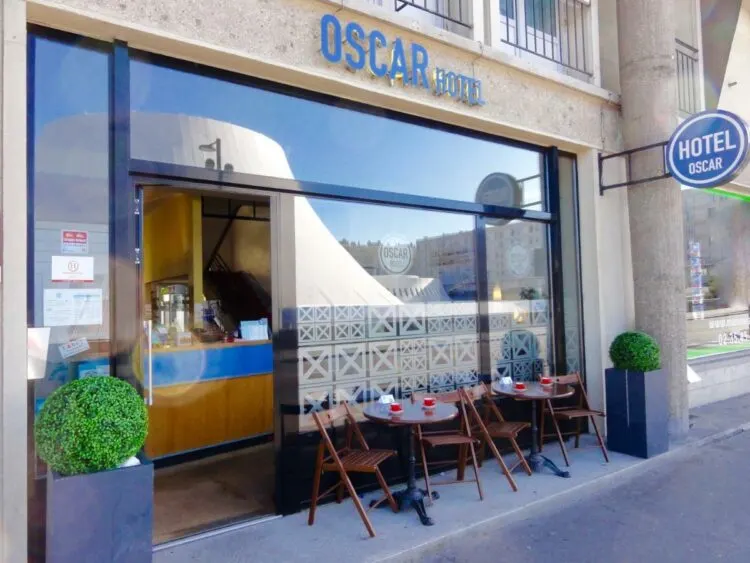
Oscar Hotel is a modern budget hotel that’s centrally located and close to Le Volcan
5. MUMA Modern art museum
One of my favourite things to do in Le Havre was the Musée Malraux of Modern Art or MUMA. This light and airy glass sided box contains the largest collection of Impressionist paintings outside Paris.
Start your visit on the quayside opposite the museum where you’ll find an information board telling you about the view that Monet painted from this very spot. He named the work “Impression, Sunrise” giving name to a whole movement of painting – Impressionism.
The art museum is a restful setting for the Impressionist paintings, many of them donations and legacies from major private art collections. Who needs Musee d’Orsay, when you can see the Monet lilies painted at Giverny.
View Renoir’s pretty Excursioniste with walking pole in hand, the elegant Degas ballerinas and artworks by Pissaro, Sisley and many others.
The art of Raoul Dufy – at MUMA
I loved the colourful, flowing art of Raoul Dufy, who was born in Le Havre. A whole wall upstairs featured Normandy cows and pastel sailing boats by Eugène Boudin who painted all along this coast.
When MUMA was built in the 1960s it was quite unusual to have a café in a museum. It looked the perfect place to sit with a coffee to contemplate the boats passing by on the Seine estuary.
If you love the Impressionists, there’s a whole trail along the coast of information signs at the places where key paintings were made. Pick up a leaflet at the Maison du Patrimoine visitor centre (181 rue de Paris).
If you go: MuMa André Malraux Museum of Modern Art, Cost: €7, free for under 26 years and on 1st Saturday of month. Open daily except Monday 11am – 6pm. Arrive by bus Line 3 from the train station.
6. Maison de L’Armateur – the Shipowner’s mansion
In contrast to all all the modern architecture is the Maison de L’Armateur or Ship Owner’s Mansion which faces the harbour. This elegant 18th century house was built in 1790 by a leading Le Havre architect. It was later bought by a wealthy merchant, Martin Pierre Foache, to use as his offices as well as the winter residence of his family.
What makes the house unusual is the central glazed atrium illuminated by a glass skylight. Four floors of rooms radiate off this central area. The mansion is elegantly furnished with wooden parquet flooring and marble fireplaces. Pictures, furniture and objects of the period show the lifestyle lived by a wealthy 18th century merchant.
The ground floor was used for storage, with the ship-owner’s office on the first floor. Upper floors were the living space of the shipowner’s family. From the upper floor rooms I could look out and imagine the merchant spending time with his family, while keeping one eye on his ships passing through the port from his window.
If you go: Maison de l’Armateur, 3 Quai de l’Ile. Cost: €7, free under 26 yrs and 1st Saturday of month. Open: 10:00 a.m. – 12:30 and 1:45 p.m. – 6:00 p.m. Closed on Tuesdays.
7. Stroll by the water in Le Havre
If you love the sea, there are plenty of places to walk close to the water in and around the port of Le Havre. Stroll along the Bassin de Commerce, the harbour front, and cruise port.
The marinas and the beach promenade come alive in summer with pop-up bars and restaurants. My sister also enjoyed a visit to Les Bains des Docks, a modern public baths and spa. Its pools, sauna, jets and leisure facilities sounded amazing.
8. On the cliffs at Etretat
A 40 minute drive north along the coast from Le Havre is the small seaside town of Etretat with a pebble beach. The white cliffs of the Alabaster coast extend at the edge of town. Here you can get the famous views of the sea arch la falaise d’aval and the seascapes loved by the impressionist painters.
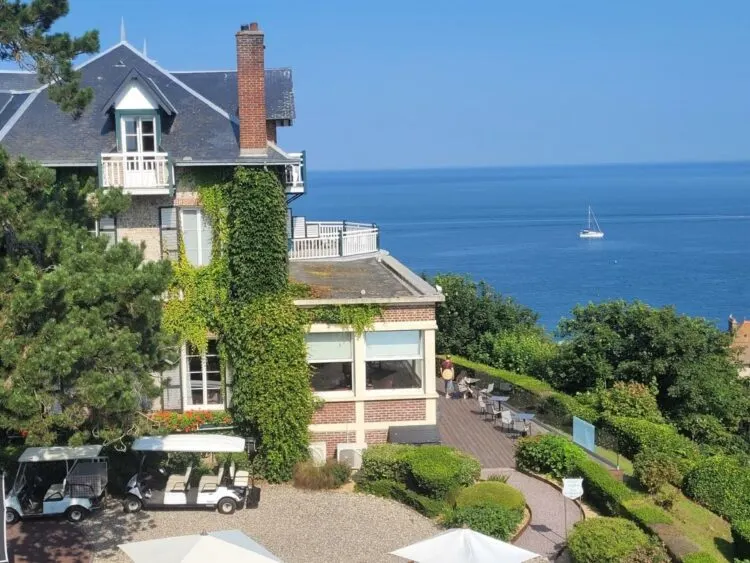
Dormy House has a grassy terrace with views over Etretat and is traditionally and comfortably furnished
The Chapel of Notre Dame de la Garde – Etretat
On the cliff tops where there’s a car park you can walk around the pretty chapel of Notre Dame de la Garde. Its cow head gargoyles along one side match the Normandy cows munching contentedly in the fields.
The original chapel was destroyed in WW2 so what you see is a reconstruction built in the 1950s. Unfortunately it wasn’t open when we visited so I couldn’t look inside.
From the chapel, paths lead along the cliff top and down to some of the hidden beaches under the cliffs that earn this the name of Alabaster coast. It was quite windy on the cliff top and I didn’t dare go much closer to the edge for fear of being blown over!
L’Oiseau Blanc – Etretat
Behind the chapel is another monument known as L’Oiseau blanc. This commemorates the transatlantic flight from Paris to New York in 1930 of Costes and Belmonte.
They had been preceded in 1927 by Charles Linderberg who being the first (and American) is of course the one to be remembered. However there were six unsuccessful attempts before his and four of these disappeared into the Atlantic, never to be seen again.
The town of Etretat
After our wander along the cliff top we drove down to the small town of Etretat which was full of charming houses, bars and restaurants. There were just a few people strolling around and walking on the pebble beach but I imagine that it is packed in summer.
If you visit Etretat by car, you may like to also stop at Manoir de Cateuil at Valaine close by. On this farm they make cider, keep goats and sell cheese and goats milk ice cream as well as delicious chocolates which we tried.
If you go: Etretat is a 40 minute drive north from Le Havre on the D940 and there is a car park on top of the cliff. You can also take the No 24 bus from Le Havre which runs several times a day.
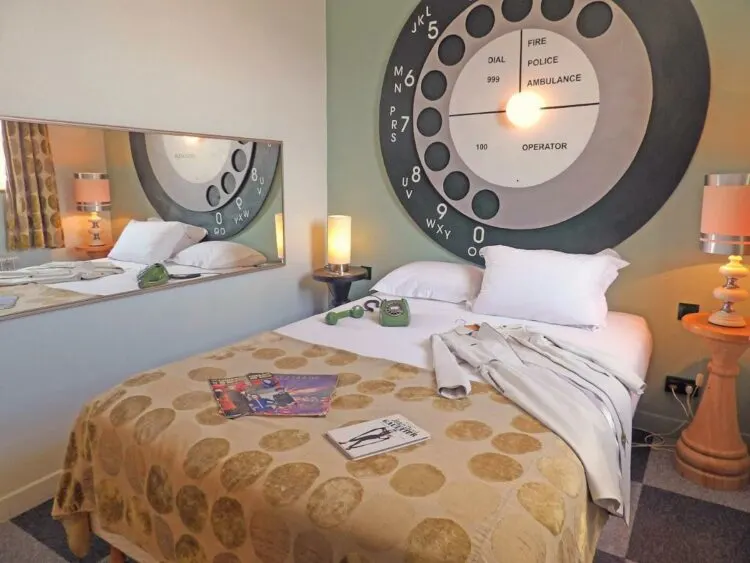
Detective Hotel is in the centre of Etretat and has a quirky detective theme, with retro furnishings
9. Try the Normandy cuisine at Le Havre
Some of the traditional dishes of Normandy are often based on cheese, cream, cider and calvados. I can highly recommend Le Bouchon Normande in Le Havre where we had dinner one evening. (77 Rue Louis Brindeau)
The restaurant has a cheerful bistro atmosphere with a menu of homely dishes. They use the best of the local ingredients from the nearby market and the surrounding region.
There are a wide range of choices from soupe de poisson and terrine de campagne to escargot (snails), tête de veau (brains) and tripe if you really insist. And of course there will be at least one desert that includes the famous Normandy apples in one form or another.
10. Food shopping in Le Havre
For food shopping in Le Havre, the covered market is open daily from 8.30am. It’s well worth a visit to drool at the selection of ripe fromage, charcuterie and chocolat.
On Sunday morning there’s also a street-market surrounding the market hall where we found even more delicious specialities. Check out the Coeur de Neufchâtel heart shaped cheeses which the local ladies used to award to the soldiers and a sign of their favour.
Since we were travelling home on Brittany Ferries there was no issue with space. We stocked up with a few delicacies of cheese, saucisson and Normandy cider to take back and enjoy.
11. A Normandy cookery class
For a real taste of Normandy, France we spent a morning at the country house outside Le Havre of Chef Régine. Chef Régine runs cookery classes as well as a “Chef Chez Vous” service where she will come and cook for your group or party.
Donning our chef’s hats we were able to try out some of the traditional dishes that Régine had recreated from the recipe books of Claud Monet who lived nearby at Giverny. Most delicious was the cheese soufflé made with gruyere, cream and nutmeg. This was followed by the Chicken Honfleur with chicken poached in a creamy sauce of butter, wine and calvados with a scattering of piquant capers.
Lunch was served at a long table in Régine’s elegant conservatory clothed in vines and lemon trees. We imagined ourselves to be living the rural French lifestyle that Monet might have enjoyed amidst his gardens at Giverny.
The piece de resistance was the Apple Giverny tart. This round of buttery shortbread is topped with apple pieces cooked in butter and a most delicious salted butter caramel sauce.
Apple Giverny Tart
As you can tell those Normandy cows have a lot to answer for! We all came away vowing to recreate that desert and luckily Régine provided us with the recipe so I can share it with you.
Apple Giverny Tart
To make the caramel sauce mix in a saucepan 100g caster sugar and 3 soupspoons of water. Add 100 salted butter cut in pieces and heat gently, adding 40cl cream slowly. Bring to the boil then turn down the heat and cook gently until thickened. Serve with the apple tart made with a shortcrust base topped with small cubes of apple that have been gently cooked in butter with a sprinkling of vanilla sugar.
Chef Régine can be contacted through Chef Chez Vous
Our weekend in Le Havre ended as we boarded the Brittany ferry bound for Portsmouth late on Sunday afternoon for the sailing home, just as the sun was setting over the harbour. After a five hour crossing with a few drinks and a nice supper, we arrived back in Portsmouth later that evening.
Our weekend with Brittany Ferries had proved that the channel ports like Le Havre are far more than a gateway to your holiday in France. I consider them weekend destinations in their own right.
They offer delicious food, fascinating history, and impressionist art. Refreshing walks by the sea and all in an easy hop across the channel. Who needs to fly?
Read more about Le Havre and Brittany
A Weekend Discovering Le Havre
A day trip to Ile de Houat – in the Gulf of Morbihan, Brittany, France
For more information
To plan your weekend break in Le Havre visit the Le Havre Tourisme website.
You can find more about the wider region on the Normandy Tourism website
Plan your ferry to Le Havre with Brittany Ferries who sail from Portsmouth to Le Havre, Caen, St Malo, and from Poole to Cherbourg and from Plymouth to Roscoff and St Malo.
Where to stay in Le Havre
We enjoyed a very comfortable stay at the 4 star Novotel. It’s a short distance from the ferry port and the train station.

Novotel Le Havre Centre Gare – comfortable, modern and well located within walking distance of the ferry port
The 134 room hotel is modern in style and a good breakfast buffet. We had a spacious bedroom on the first floor with an extremely comfortable mattresses. There was a tram stop close by to reach the centre of town, although we could also have walked. Novotel Le Havre, 20 Cours La Fayette, Quai Colbert, 76600, Le Havre, France.
Sailing to Le Havre on Brittany Ferries
Heather travelled on Brittany Ferries who sail daily to Le Havre as well as a number of other ports in Brittany and Normandy. We sailed on board the Etretat, with a bar, lounge and small cinema as well as a self service restaurant with excellent food. Check the Brittany Ferries website for more information and to book your crossing.
Pin It
Thanks to Le Havre Tourism and Brittany Ferries who hosted* Heather and her sister for a weekend break in Le Havre.
* More info on my policies page
This article is originally published at Heatheronhertravels.com


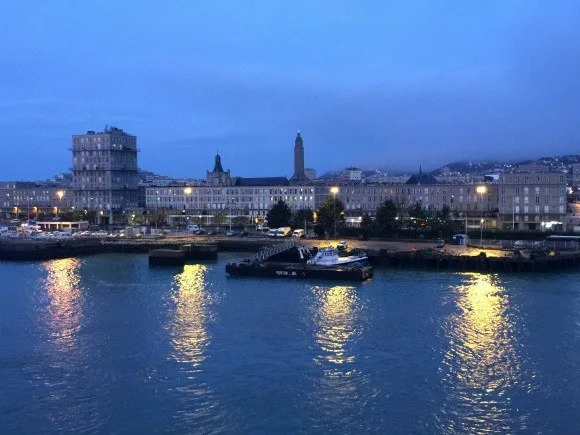
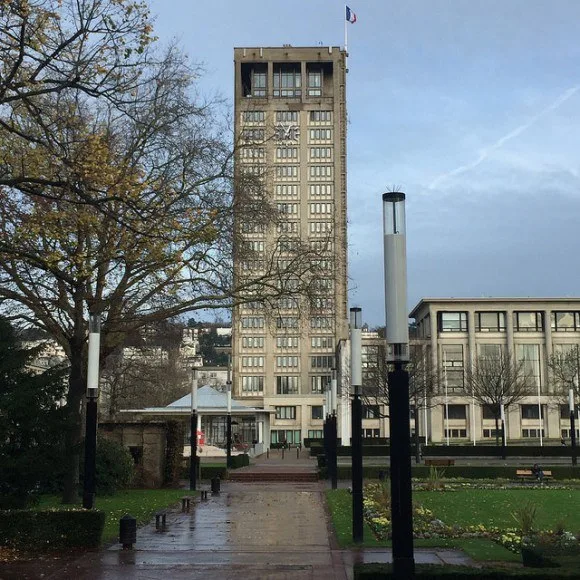
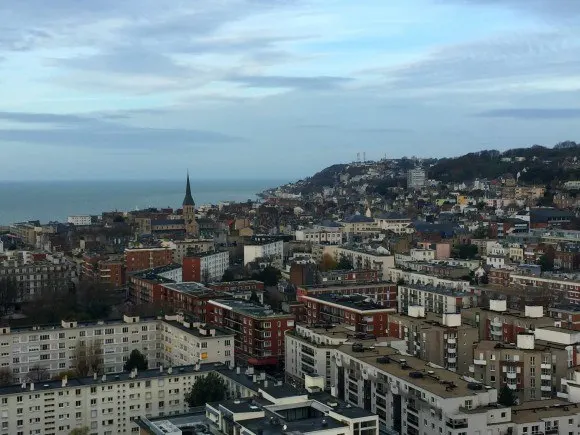
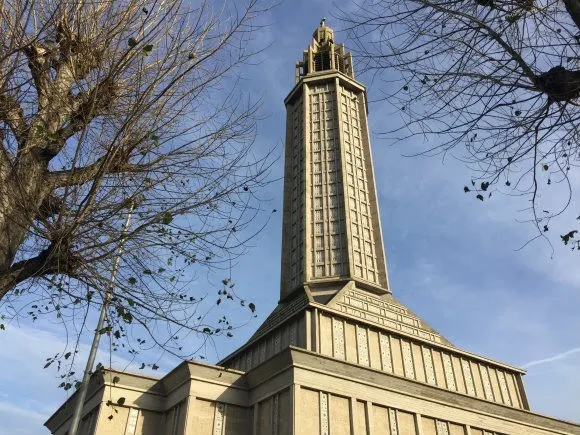
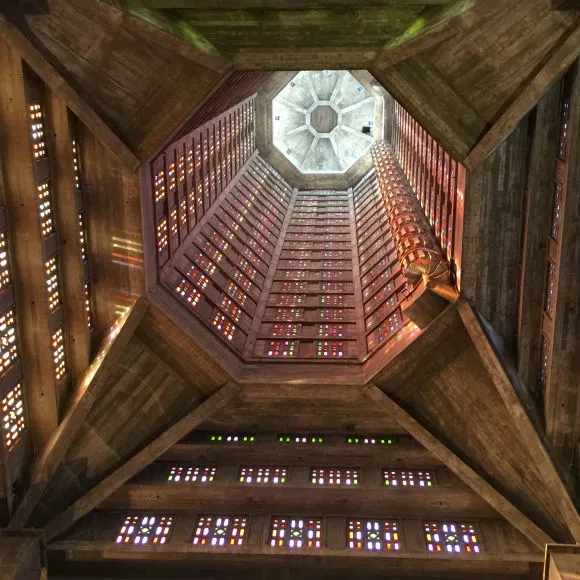
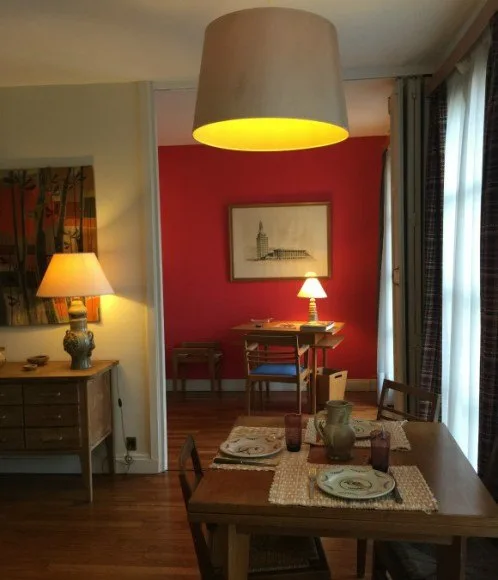
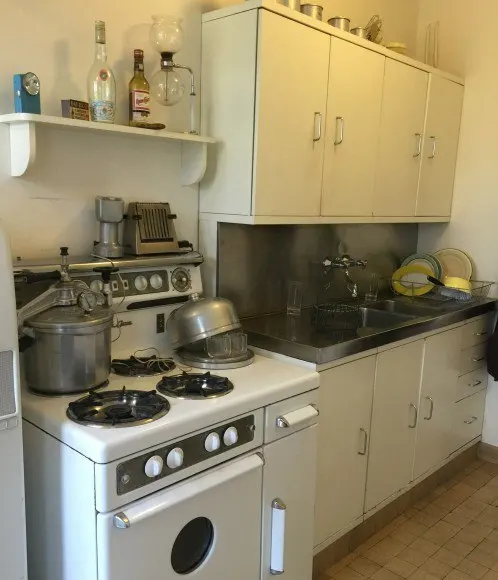
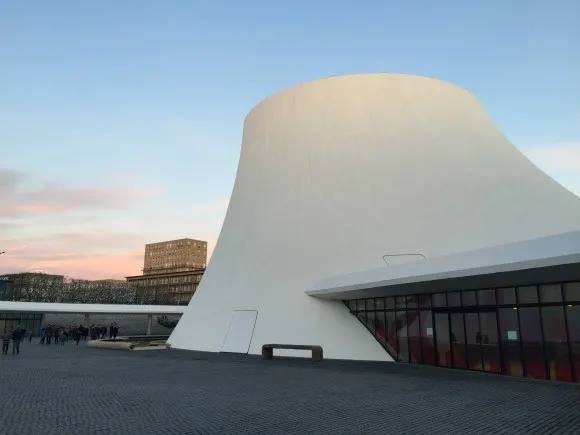
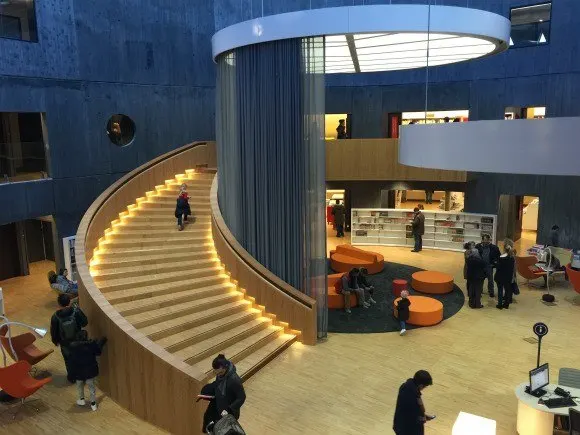
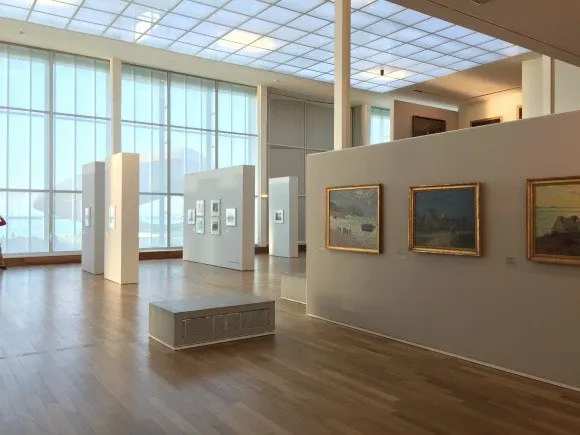
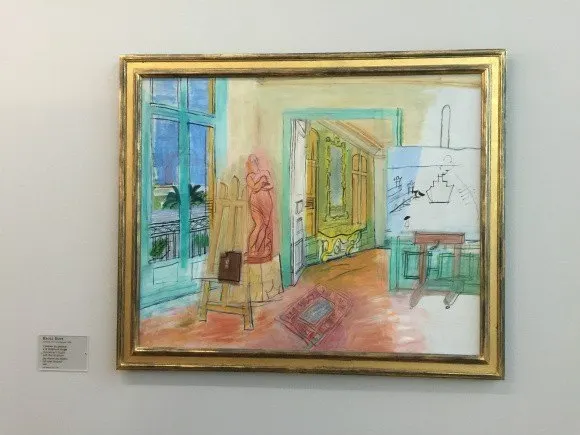
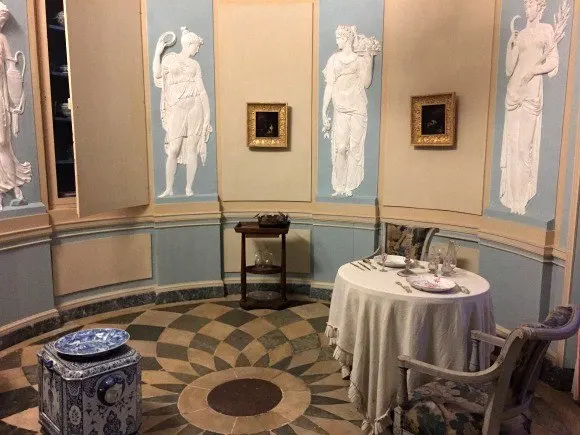
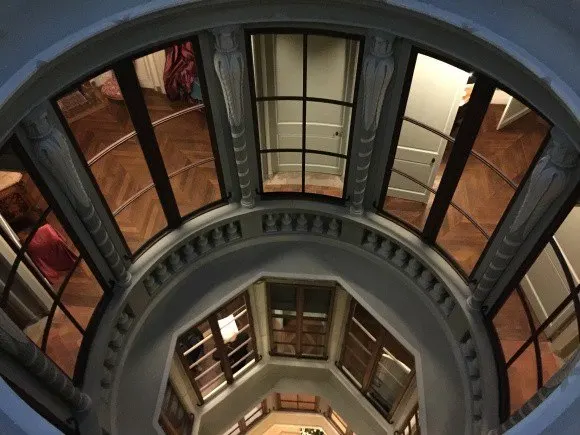
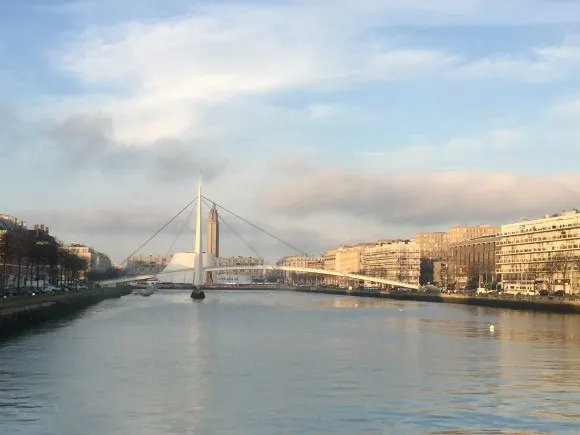
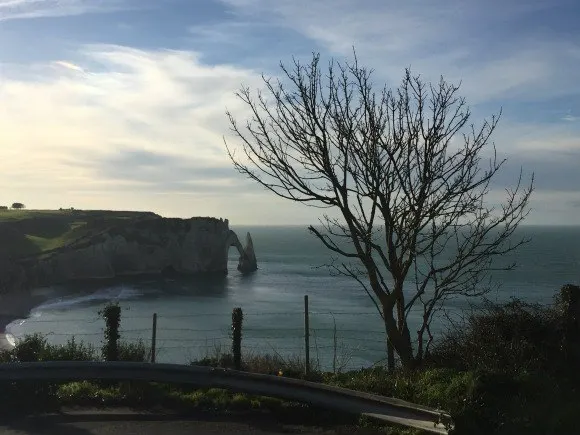
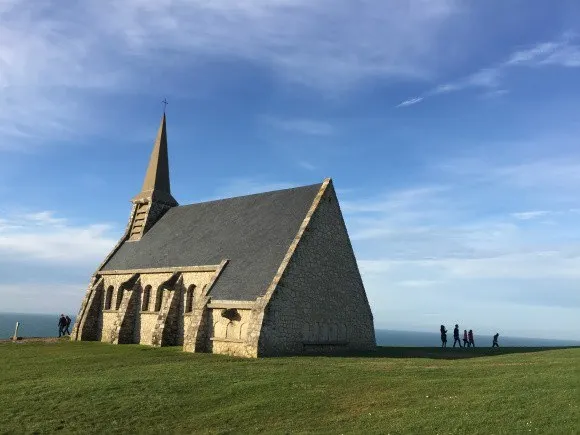
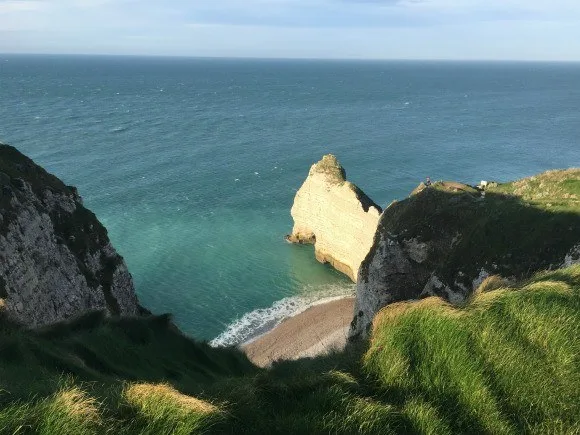

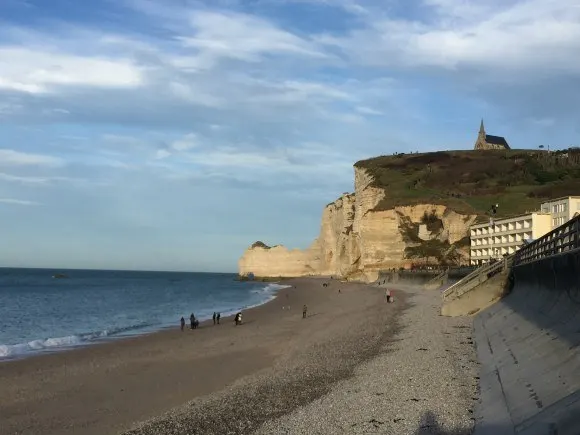
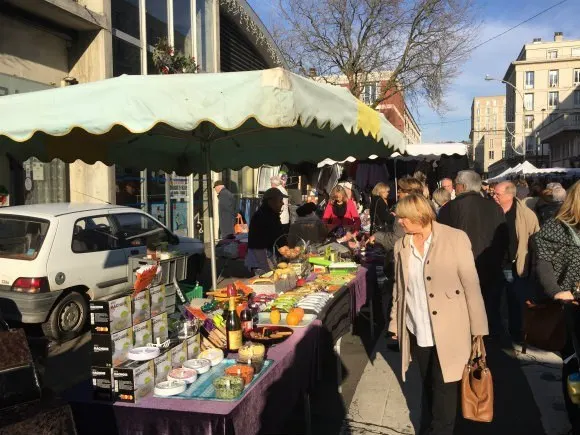
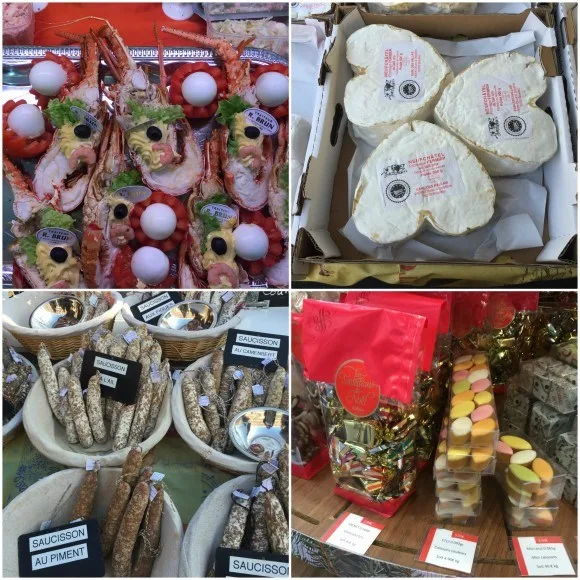
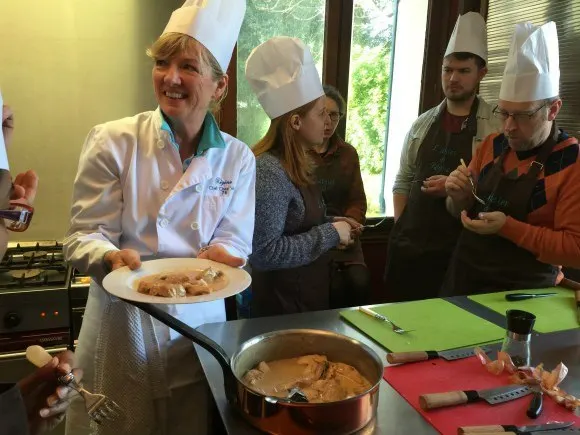
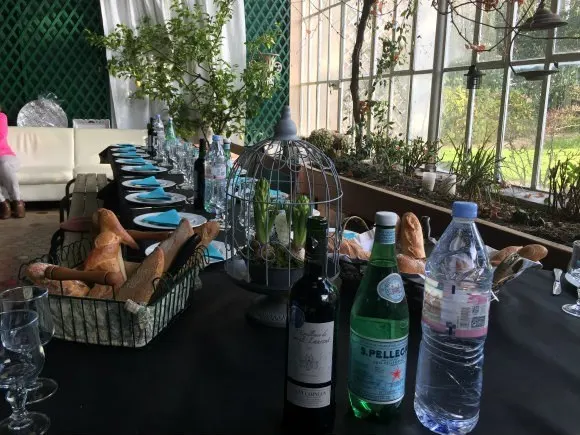
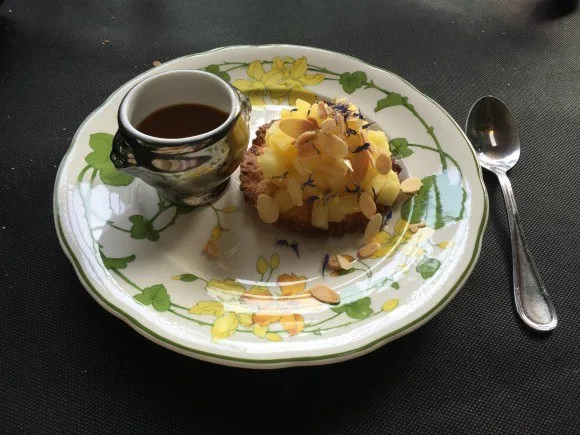
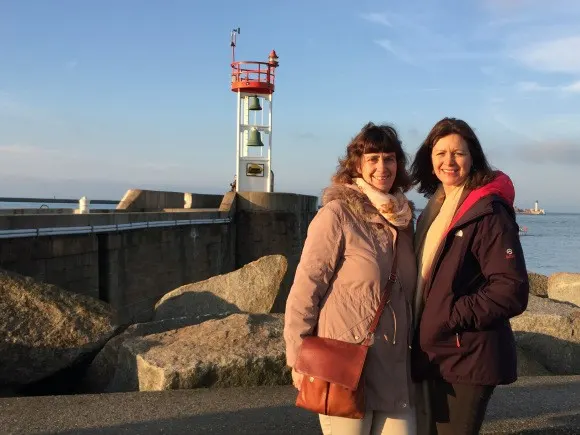
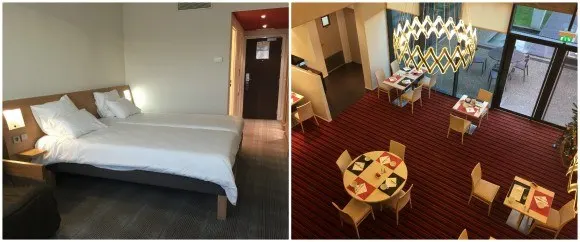
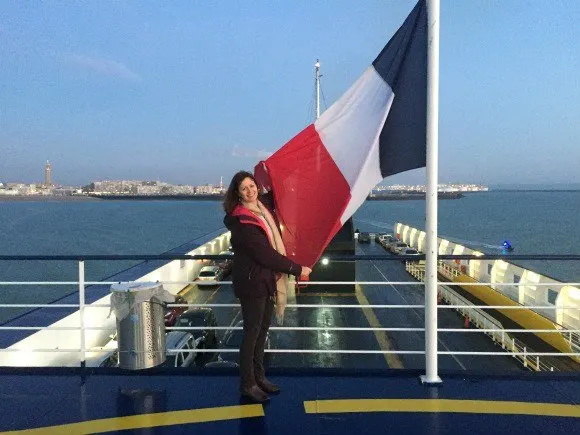
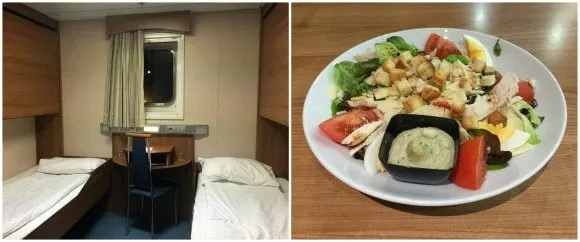
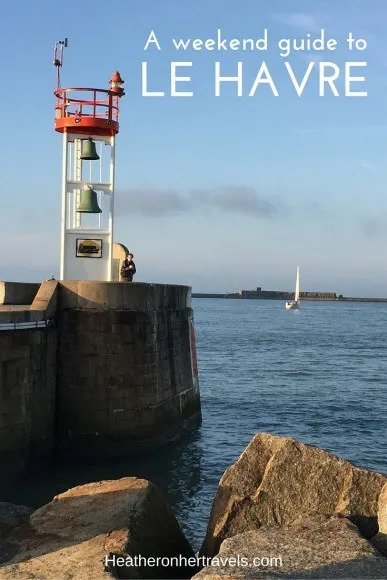

Janet Jones
Monday 10th of April 2017
I wholeheartedly agree with your recommendations and highlights of Le Havre! My husband visits his company's office in Le Havre each month and I often accompany him. Before my first visit I was of the widely held opinion that there would not be much to see or do - how wrong I was! Having visited all of the attractions you mentioned I have also ventured further afield as I usually have use of the car- Honfleur is delightful, especially midweek and out of season to avoid the crowds and the Benedictine distillery is well worth a visit for both the architecture and the tastings! We stay at the Hotel Vent d'Oeust opposite the Eglise St Joseph - a small but comfortable hotel with a small spa and good buffet breakfast. There are lots of good restaurants - this is France after all but we like La Voile Bleu just off the beach promenade - nothing much to look at but good seafood and steaks. If you are there at the right time of year you can also pick up Coquilles St Jacques fresh from the fish market at a fraction of the price in the U.K. and they are caked on tubs so don't smell out the car on the return ferry trip! 2017 is the 500th anniversary of Le Havre so there are lots of special events planned throughout the summer- check the town website. Am going to check out the cookery school and try the sole tarte recipe!! Bonnes Vacances!!!
Heather Cowper
Wednesday 12th of April 2017
@Janet So pleased you've had such lovely times in Le Havre, I'd love to go back again in summer and enjoy the beaches and cliff walks too.
Quentin
Friday 22nd of January 2016
Hi. I live in le Havre and it's a really good presentation. Hoping that with your article, there will be more tourists !
Heather Cowper
Friday 22nd of January 2016
@Quentin Thanks, hope more people get to visit because there's plenty to enjoy
Paul (@luxury__travel)
Friday 22nd of January 2016
I must confess, I'm one of the many Brits who has just regarded Le Havre as a ferry terminal - next time I'm passing through (and it's been a while), it seems I should have more of a look around!
Heather Cowper
Friday 22nd of January 2016
@Paul Le Havre is definitely worth stopping for
Jackie De Burca
Thursday 21st of January 2016
I have only passed through Le Havre, but your post is so wonderfully detailed (well as they all are Heather :)) that I certainly would make the time to spend a day or two there the next time. I would love to do some cookery lessons also. Wow, that stained glass is wonderful.
Heather Cowper
Thursday 21st of January 2016
@Jackie I highly recommend planning in a day to see something on Le Havre next time you are passing through
Erin
Wednesday 20th of January 2016
Oh I love that oven in the apartment, so quaint. Looks like a great little get away, I do love me a piece of history.